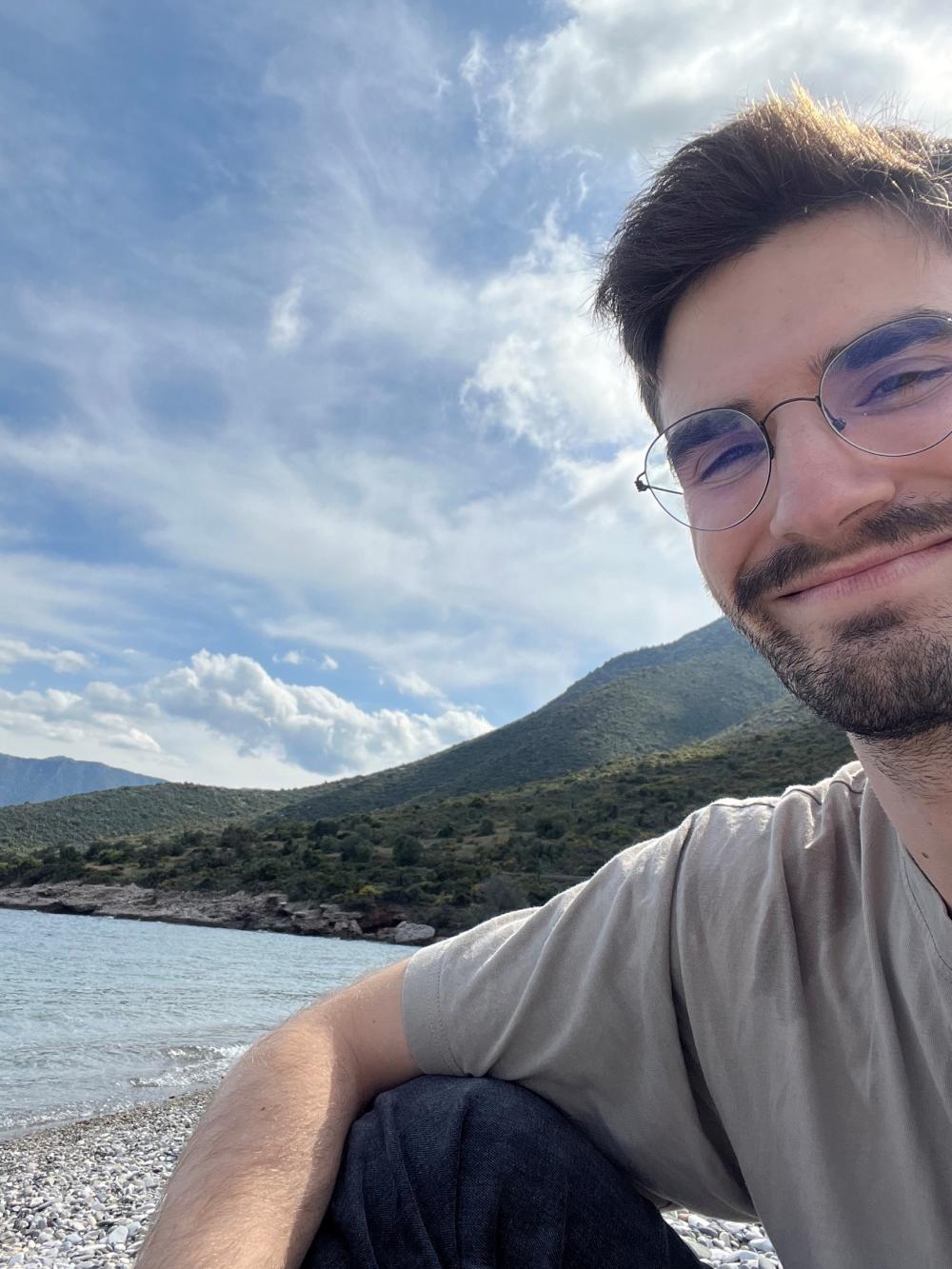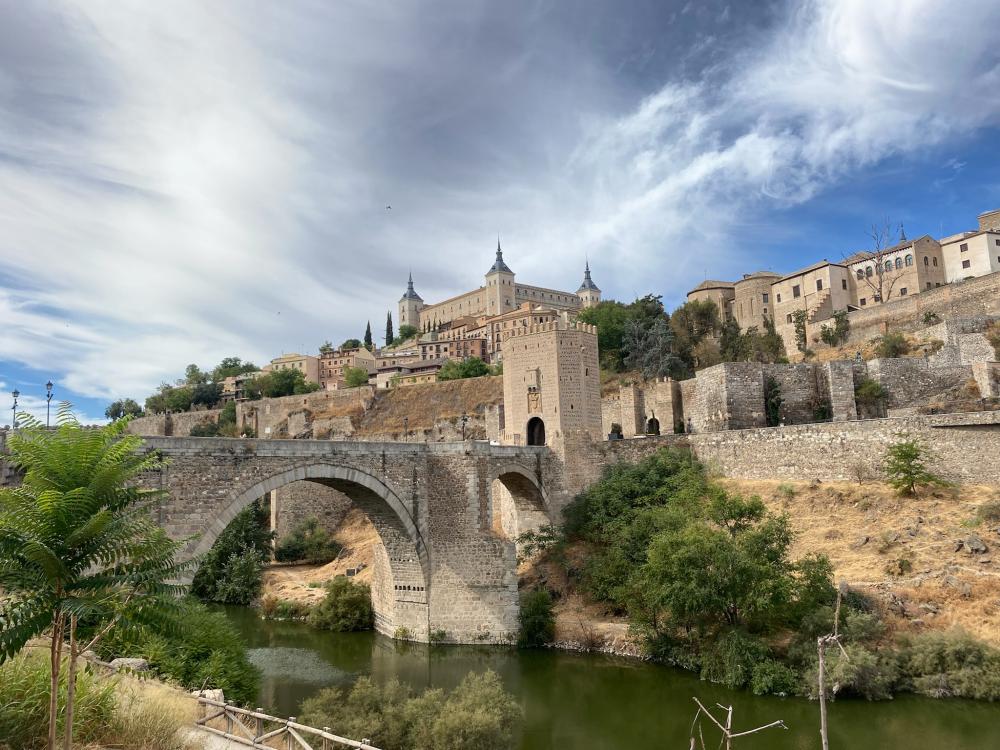Student perspectives
Presenting research to different audiences generates new ideas
My name is Antoni Porayski-Pomsta and I am a PhD candidate in History. My dissertation explores spatial and social marginality in late nineteenth and early twentieth-century Russian Poland (the part of Polish-Lithuanian Commonwealth that was incorporated into the empire in the late eighteenth century). Specifically, I focus on industrial suburbs that, in this period, became home to tens of thousands of migrants from the countryside. Using conceptual frameworks developed by social historians and sociologists of space, I explore how the margins of city life became spaces of danger, criminality and resistance to the imperial state and, sometimes, Polish and Jewish elites too. At the same time, I am interested in studying everyday life in spaces where despite crippling poverty, people led meaningful lives.
I get to present my research in front of very different audiences. Last September, for instance, I attended a workshop in Paris co-organised by the Cambridge Faculty of History and the École des Hautes Études et Sciences Sociales. This gave me the opportunity to take the Eurostar for the first time and present my work in front of French colleagues. The workshop was focused on social history, so the issues that we discussed included methodology and comparisons between different continents and periods. For example, one of the convenors on the French side suggested that when talking about suburban bandits in fin-de-siècle Russian Poland (the so-called ‘Revolutionary Avengers’), I should consider making comparisons with Atlantic pirates. If I hadn’t taken part in the workshop, this idea certainly wouldn’t have occurred to me.
Later in 2023, thanks to the generosity of my funding body (the Economic and Social Research Council) and Clare College, I went to Philadelphia and presented my research at the annual Association for Slavic, East European and Eurasian Studies conference. I took part in a panel focusing on the politics of temporal cultures in fin-de-siècle Central and Eastern Europe, in front of an audience that was interested in the empirical nuts and bolts of my research. In fact, in the audience of our panel were three people who had been born in the very suburbs of Łódź that I study in my PhD! The questions ranged from the specific (the specific archives and documents that I use) to the general (national and world events).
Changing perspectives is particularly helpful when thinking about the wider applicability of one’s research. It is very easy to get lost in a scholarly community in area studies, and workshops and conferences are a wonderful way to escape this trap. For me, the next exciting step will be presenting in front of colleagues from different disciplines, such as sociology or anthropology.

Spatial histories and material evidence: Christian power in medieval Spain
Medieval Iberian historiography has long been dominated by debates over interfaith relations and the protracted Christian conquest of Muslim-ruled al-Andalus. Entering this rich historiography, my work explored two main questions. Firstly, how did rulers and churchmen use space in their endeavours to establish Castilian Christian power? Secondly, how did those living in Castilian territories understand and interact with these spaces? This focus on spatial history was inspired by the classes I took as an undergraduate. I was first introduced to the field by Prof. Caroline Goodson’s classes on performance and power in ancient and medieval cities, and my interest was further developed through Dr. Helen Pfeifer’s course on ‘The Power of Place in Ottoman History, 1300-1800’. My BA dissertation, entitled ‘The production of space and Christian power in thirteenth-century Castile’, drew on the spatial theories and methodologies I learned in these classes to develop an understanding of how Christian rule was consolidated within Castilian territories following their conquest. This research was supervised by Dr. Rodrigo García-Velasco and Prof. Caroline Goodson, who expertly supported me throughout this process.
Integrating the wide range of source material needed to try and reconstruct thirteenth-century spaces was one of the main challenges in producing my dissertation. Manuscripts digitised through the Patrimonio Nacional (the Spanish public organisation responsible for royal heritage) were of great use. One such manuscript was the Códice Rico version of the Cantigas de Santa María, a lyric cycle consisting of 420 poems that all describe Marian miracles. This work was produced at the court of King Alfonso X (r. 1252-1284) and is accompanied by vibrant illustrations in the Códice Rico manuscript. The Cantigas de Santa María sought to legitimise Christian, Castilian rule and to sacralise newly conquered territories. Furthermore, as the numerous non-Christian figures in these miracle stories suggest, the Cantigas also responded to the presence of Jewish and Muslim communities within Castilian lands and churches, seeking to determine acceptable non-Christian involvement in these spaces. This involvement in church spaces was significant. Materially, many Castilian churches were constructed and maintained through labour taxes imposed on Muslims. Extant legal documents show the royal decrees that promulgated these forced labour requirements and suggest the continued resistance of Muslim communities to them. Moreover, the Archbishop of Toledo, Rodrigo Jiménez de Rada, controversially hired Jewish notables as administrators for the city’s cathedral. Using textual sources was therefore key to this spatial analysis, and they were especially useful in studying the experiences and discourses surrounding sacred spaces.
In addition to these sources, architecture was central to my research. This primarily focused on surviving religious buildings, including the cathedrals of Cordoba, Toledo, and Seville. These three sites of worship reflect the influences of Gothic and Islamicate architecture on the Castilian built environment. Seville Cathedral was a particularly important source for analysing spatial manifestations of interfaith relations and exemplifies the main themes of my study. Following the Castilian conquest of Seville in 1248, the city’s central mosque was consecrated and thereby converted into a cathedral. This was a common occurrence in medieval Iberia and aimed to declare Christian dominance. The original building was replaced by a Gothic structure in the fifteenth and early sixteenth century, but for a century and a half after Castilian conquest it was the medieval Almohad mosque that housed Christian worship. What does survive from my period of study is the cathedral’s royal pantheon, containing the tomb of King Ferdinand III (r. 1217-1252). This remarkable piece of late-thirteenth-century architecture features epitaphs in four different languages - Latin, Castilian, Hebrew, and Arabic. Like the Cantigas, these multilingual epitaphs responded to the plurality of Castilian society and promoted a narrative of cross-faith consensus supporting a universal Castilian monarchy. Combining written and material sources such as these can thus illuminate the complex and unsettled nature of Christian power in thirteenth-century Castile. This brief overview of my dissertation research ultimately hopes to support turns towards spatial histories and material evidence.

